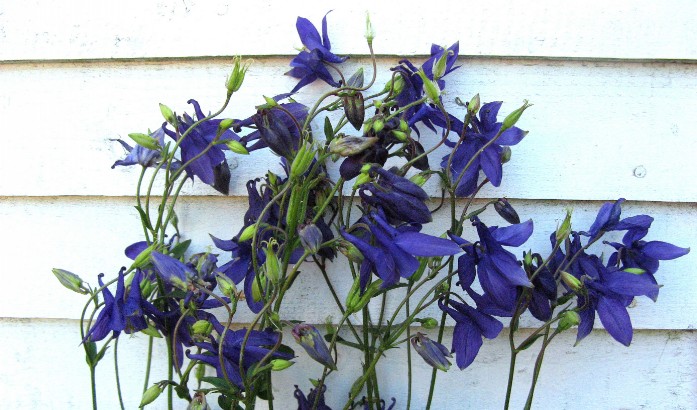C-D
Herbs A-Z
CARAWAY (Carum carvi) Folklore belief that it could be used to stimulate memory. Widely used for flavouring, also for the treatment of bruises, poor digestion, eye problems and stomach disorders, particularly flatulence.
CHAMOMILE (Chamaelum mobile/ Anthemis nobilis) Name from Greek meaning 'ground-apple' because of the smell. Used to treat agues, bowel disorders, cramps , dropsy, and jaundice.
CHICORY(Cichorium intybus) Succory, Blue Dandelion, Coffee weed. Used as a coffee substitute or added to coffee. In European folklore, it was believed that carrying a sprig of chicory would open locked doors. Use to treat bleeding from the mouth or nose, bloody urine, fluxes, women's courses, bruises, internal and external wounds, haemorrhoids, loin and kidney disorders, vaginal discharge, lung disorders and gout.
COSTMARY (Tanacetum balsamita) Mace, Balsam Herb, Alecost, Bible Herb. Used to flavour beer, as a bookmark in a bible, fresh leaves used in salads and pottages, dried in pot-pourri. Used to treat liver diseases, ulcers, sores, cancers and fistulas, worms and headaches. 'The Conserve made with leaves of Costmaria and sugar doth warm and dry the braine and openeth the stoppings of the same, stop pets all catarrhes, rheumes and dry distillations, taken in the quantities of a beane.' (Gerard)
CHIVES ( Allium schoenoprasum) Flavouring and garnish, stoppage of urine. Culpepper also believed eaten raw they caused troublesome sleep and damaged the eyesight.
CLARY (Salvia sclarea) 'Clear - eye' as was used for eye problems. Used to treat tumours and swellings, kidney disease and splinters.

Columbine - Aquilegia vulgaris
COLUMBINE (Aquilegia vulgaris) carrying a posy was believed to arouse the affections of a loved one, also used to ease the pain of childbirth, and to treat mouth and throat infections.
COMFREY (Symphytum officinale) Was believed that placing a leaf of of Comfrey in the luggage would protect it from theft. For thousands of years has been used as a remedy for broken bones with a poultice made from the roots. In 16 C was used to treat internally: bleeding at the nose or mouth, sore or swollen breasts, bruises, fluxes, gout, haemorrhoids, lung disorders, rein or kidney disease, ruptures, whites (vaginal discharge) and bloody urine.
COTTON LAVENDER (Santolina chamaecyparissus) used as decoction to expel parasites, an antidote to stings of venomous creatures, and treating scabs and 'the itch', branches were hung in rooms to repel insects.
